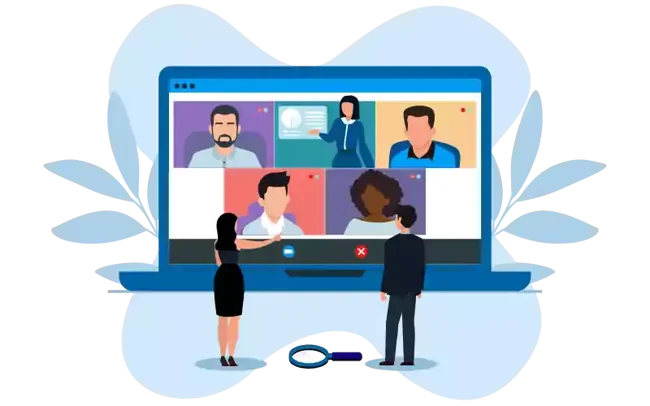Enhancing Audience Engagement Through Interactive Formats and Personalized Experiences

In the evolving landscape of digital events and webinars, passive consumption is rapidly giving way to interactive engagement. Audiences today expect more than just being talked at — they want to participate, influence, and connect. This shift is pushing event organizers and marketers to adopt interactive formats such as live polls, Q&A sessions, clickable calls-to-action (CTAs), branching content, and personalization strategies to enhance audience experience and drive meaningful outcomes.
The Rise of Interactive Engagement
Traditional webinars and virtual events often followed a one-way communication model. However, with increasing digital fatigue and reduced attention spans, audiences crave experiences that are dynamic and responsive. Interactive features empower participants to shape their own journeys, leading to greater satisfaction, retention, and action.
Let’s dive into how these elements are transforming virtual engagements:
1. Live Polls: Giving the Audience a Voice
Polls are a simple yet powerful way to involve attendees during a session. Whether used to test knowledge, gather opinions, or kick off a discussion, live polls provide instant feedback and keep the audience mentally engaged.
For example, asking attendees “What’s your biggest marketing challenge?” at the beginning of a webinar allows presenters to tailor their message and show they’re listening. Displaying poll results in real time fosters transparency and encourages participation.
2. Live Q&A: Creating Real-Time Dialogue
Q&A sessions move the needle from presentation to conversation. Allowing attendees to submit questions — and get live responses — builds trust and interactivity. More advanced platforms enable features like upvoting questions or moderating submissions to keep the conversation relevant and engaging.
Live Q&A also signals to the audience that their input is valued, and that the presenters are confident and knowledgeable enough to address questions in real time. It transforms the audience from passive viewers into active contributors.
3. Clickable CTAs: Driving Immediate Action
Strategically placed, clickable calls-to-action within a webinar or event interface provide clear next steps for attendees. These CTAs can direct participants to schedule a demo, download a whitepaper, start a free trial, or chat with a sales rep — depending on where they are in the buyer journey.
The key to effective CTAs is timing and relevance. Embedding them during key moments of the presentation — such as right after showcasing a compelling use case — maximizes conversions and keeps engagement high.
4. Branching Content: Letting the Audience Choose Their Path
Not all attendees are interested in the same content. Branching logic allows viewers to choose which topics or sessions they want to explore next based on their interests or roles.
For example, a tech company hosting a product demo could offer different breakout rooms: one for IT admins, one for end-users, and another for security professionals. This self-directed format ensures that each participant’s experience is more relevant, increasing the value they get from attending.
5. Personalization: The Human Touch in Digital Events
Personalization goes beyond using someone’s name in an email. In the context of live events, it means customizing the experience based on attendee behavior, preferences, or demographics.
Some platforms use AI to recommend sessions, content, or even networking matches based on profile data. Personalized greetings, content recommendations, or tailored follow-up emails can make participants feel seen, heard, and appreciated — ultimately increasing engagement and loyalty.
Conclusion
Today’s audiences expect more than just information — they seek interaction, relevance, and connection. By integrating features like live polls, Q&A sessions, clickable CTAs, branching paths, and personalization into your digital events, you not only boost engagement but also build trust and deeper relationships with your audience.
Interactivity is no longer optional — it’s a critical component of modern event strategy. By embracing these tools and designing events with the audience experience at the center, organizations can deliver value, spark conversations, and inspire action like never before.
Read More: https://intentamplify.com
- Art
- Causes
- Crafts
- Dance
- Drinks
- Film
- Fitness
- Food
- Games
- Gardening
- Health
- Home
- Literature
- Music
- Networking
- Other
- Party
- Religion
- Shopping
- Sports
- Theater
- Wellness


